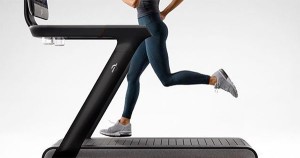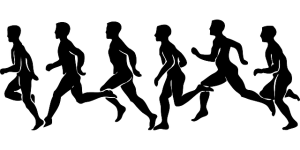RUN STRONGER – A PODIATRIST’S PERSPECTIVE ON IMPROVING YOUR RUNNING
David Royle – Podiatrist – discusses the benefits of having your running gait assessed to run stronger
Running is a key movement of the body and involved in many different sports and activities. The high velocity nature of running makes it essential for a variety or sports. High energy expenditure makes running a great option for burning calories and living a healthy lifestyle. While running, the foot functions in a similar fashion to walking however, there are some key differences. One of these being, in running there is a period of flight and a much greater ground reaction force than walking.
The ‘stance phase’ of running starts with the outside of the heel striking the ground. To absorb shock and allow movement to carry up the kinetic chain the foot acts as a flexible shock absorber and pronates – or ‘rolls in’.
The tibia – the largest bone of the lower leg – rotates inwards followed by the knee flexing and also rotating internally. The hip and pelvis flex and rotate in the same fashion and this “winding” of all the structures up. This allows the kinetic chain to attenuate the ground reaction force that is placed on the foot.
As the foot reaches ‘midstance’ it transitions from a flexible shock absorber to a rigid lever. The structures moving up the chain start to unwind through external rotation and extension which moves the centre of mass forward and propells the body until the toes leave the ground and ‘flight phase’ begins.
 Your individual and natural running gait is believed to be the most energy efficient. However, there can be structural or soft tissue restrictions present. Inactivation of certain muscles groups at the appropriate times can also occur which will lead to compensations, excessive load on structures and possible injury.
Your individual and natural running gait is believed to be the most energy efficient. However, there can be structural or soft tissue restrictions present. Inactivation of certain muscles groups at the appropriate times can also occur which will lead to compensations, excessive load on structures and possible injury.
Seeing a podiatrist for a biomechanical assessment is helpful to identify if your chain of movement is firing in the correct order, if there are any inactive muscles or if any compensations are occurring in your running style and gait. A specific treatment plan is often tailored and implemented for patients which aims at correcting and improving biomechanics.
A podiatrist will assess your running gait on a treadmill and test the movement and strength of different structures of the body. Gait retraining may be an option as well as muscle strengthening, stretching and activation exercises. Correct training principles and training techniques should be discussed and implemented at this point to avoid doing “too much too soon” and increasing the risk of an avoidable injury.
Appropriate footwear is a massively important part of running. Your Podiatrist is trained in the assessment shoes and will be able to give you brand advice, footwear recommendations and match these back to your foot posture. Should your current shoes need updating or are not appropriate for your current activity level; the podiatrist will provide information on which shoes to get and where to purchase from.
Lastly, a podiatrist also has the ability to prescribe an orthotic device to improve mechanics and load. Orthoses are optimally used in conjunction with the correct pair of shoes and constantly checked and reviewed to match your activity level, changes to your feet and legs and maintain support.



